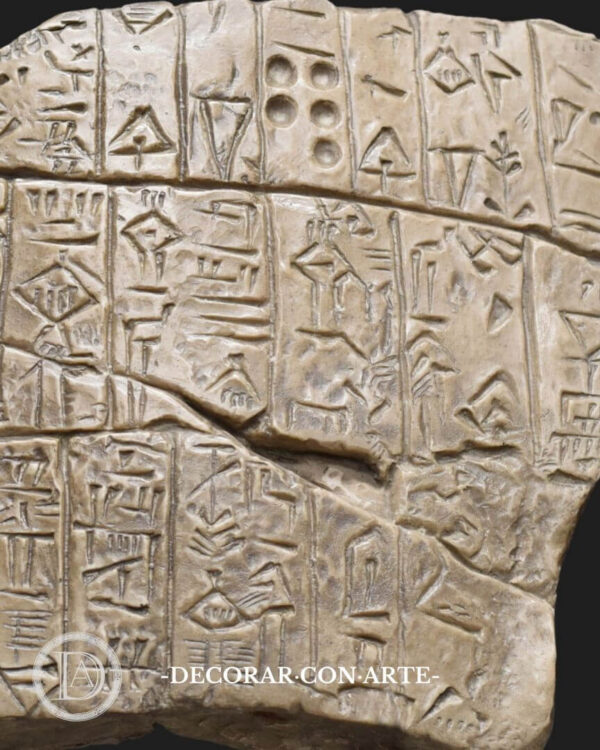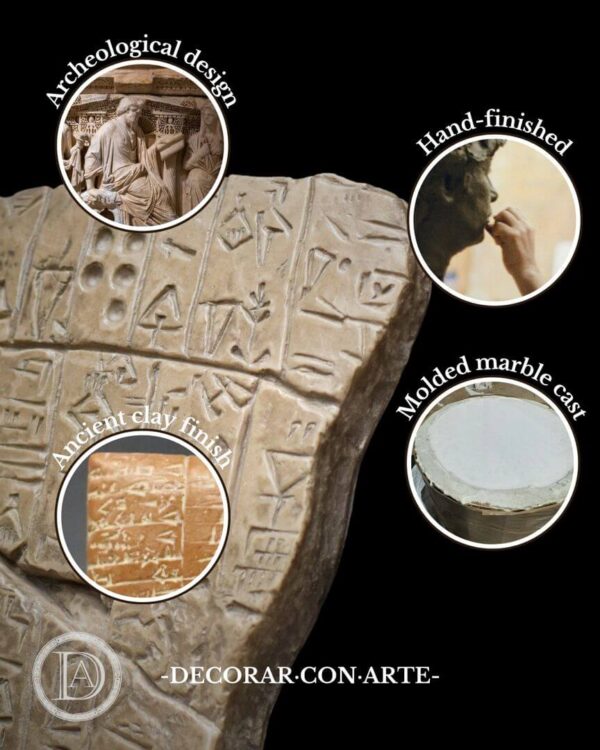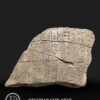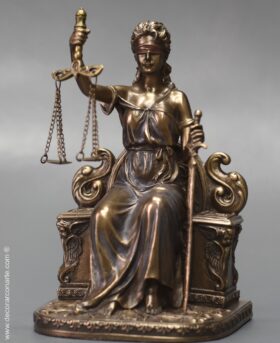Description
Code of Urukagina, reproduction of a Sumerian tablet made of molded marble (marble dust + binder). Finished with an aged clay appearance.
First legal code known in history.
Dimensions: Height: 27 cm. Width: 36 cm. Depth: 4 cm.
Fragment of a clay cone – text of Urukagina. Louvre Museum.

Reproduction of a Sumerian cuneiform tablet, circa 2350 BCE, Louvre Museum. Fragment of an inscription on a clay cone.
The translation of the Sumerian text on this fragment is:
“He [Uruinimgina or Urukagina] dug (…) the canal to the city of NINA. At the beginning, he built the Eninnu [Temple of Ninnu], at the end, he built the Esiraran.”
Urukagina or Uruinimgina was the ruler (Ensi) of the Sumerian city-state of Lagash between 2380 and 2360–2371 BCE. He was known for his social reforms and for the Code of Urukagina, the earliest known legal code in history. Though known only through references and citations, the code included laws protecting the most vulnerable groups in society, such as orphans and widows. In the surviving texts, like the clay cone from which this fragment originates, various measures and decrees issued during his reign are recorded, reflecting his efforts to combat corruption and the abuse of power by officials and nobles.
The reign of Urukagina of Lagash is thus notable as an example of justice, as shown by the measures he took to fight against usury, hunger, crimes against people and their property such as murder and theft, and the exploitation of the powerful over the lower classes.
His reign ended with the conquest of Lagash by the king of Umma, Lugalzagesi, who for the first time unified the other Sumerian city-states under a single rule.




















Reviews
There are no reviews yet.